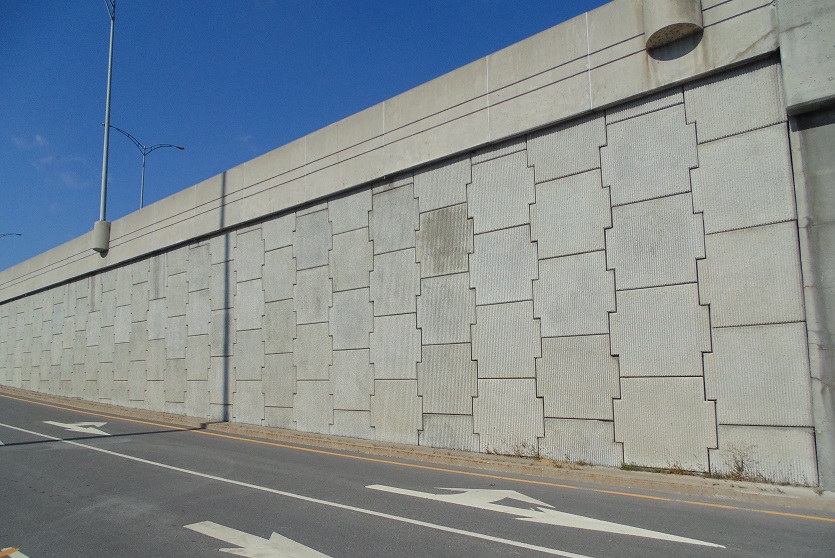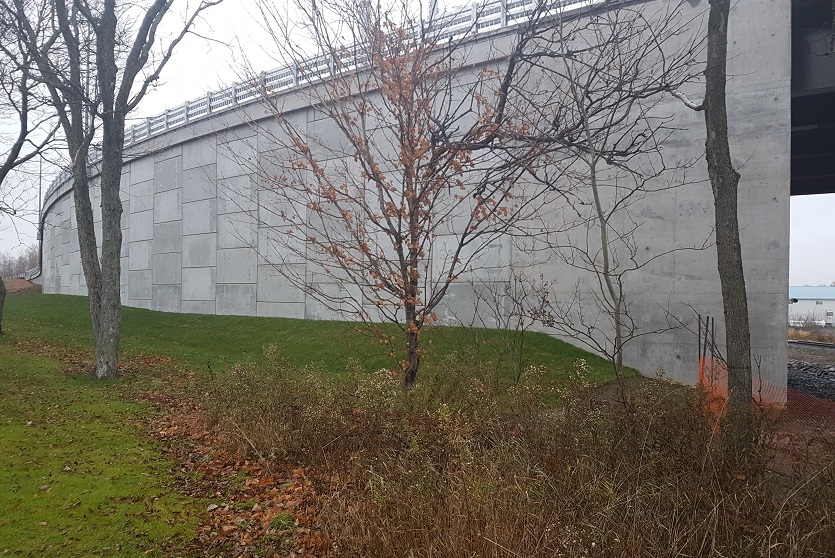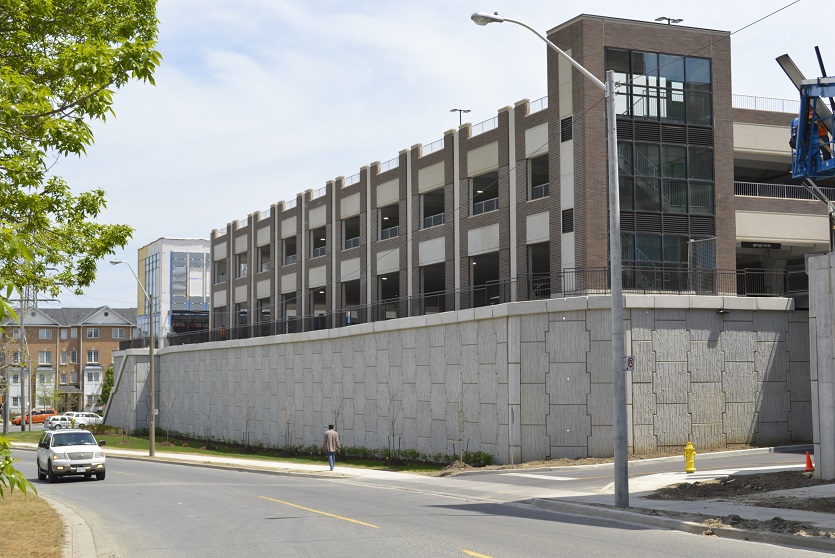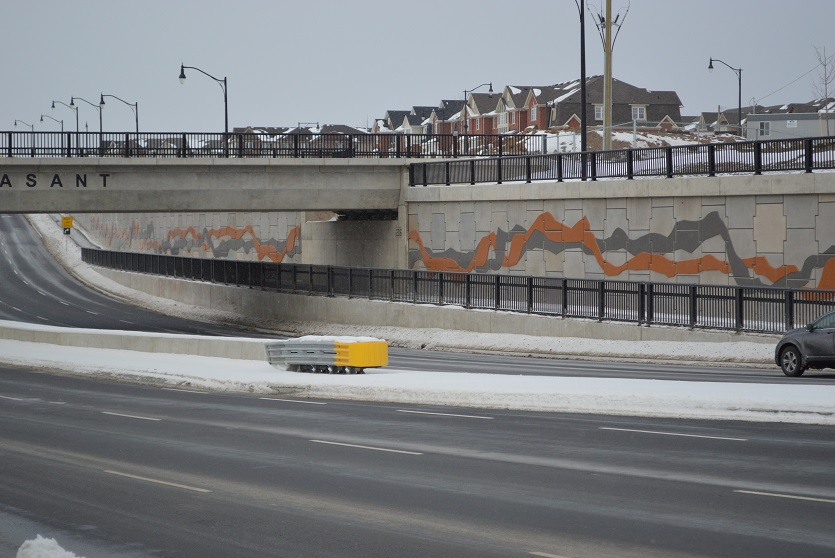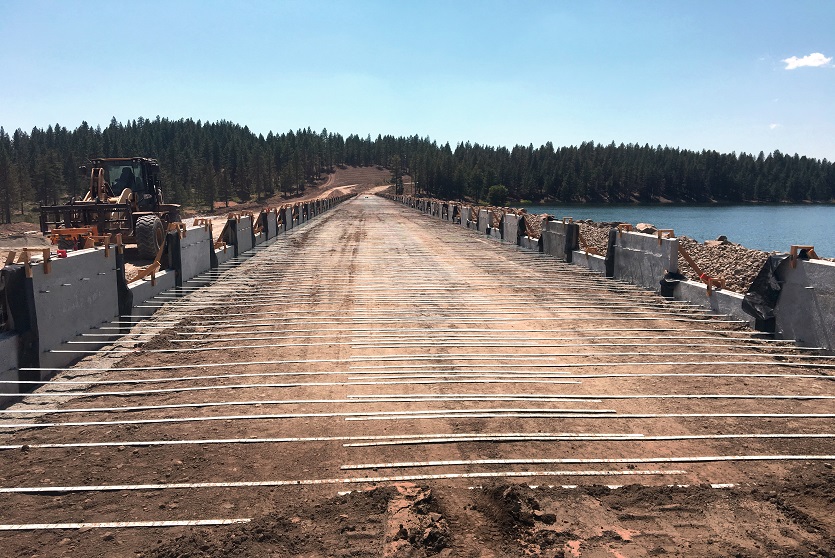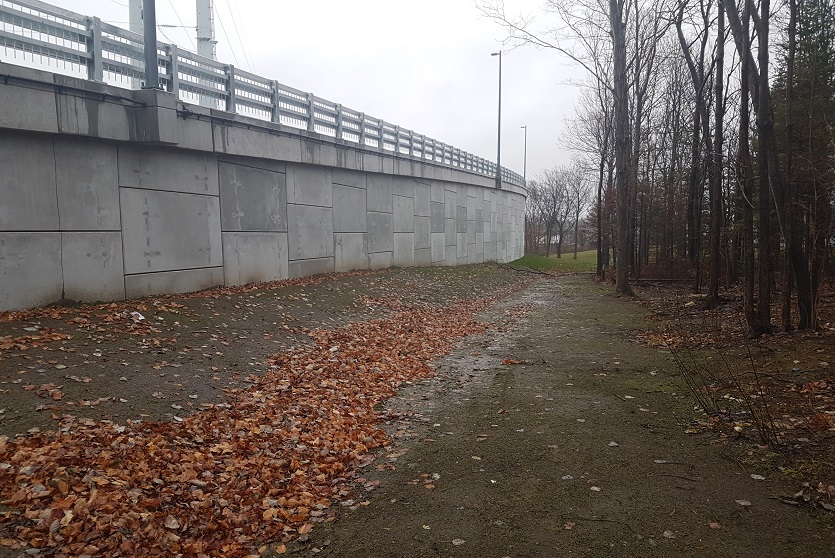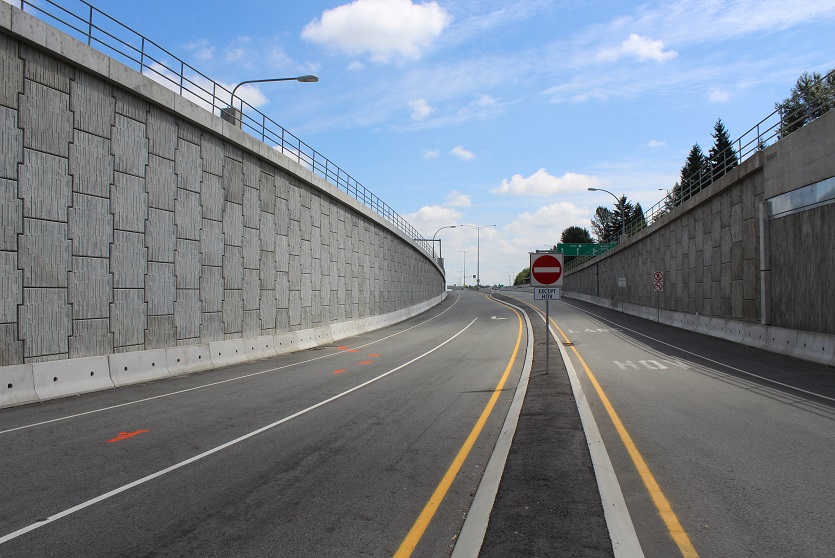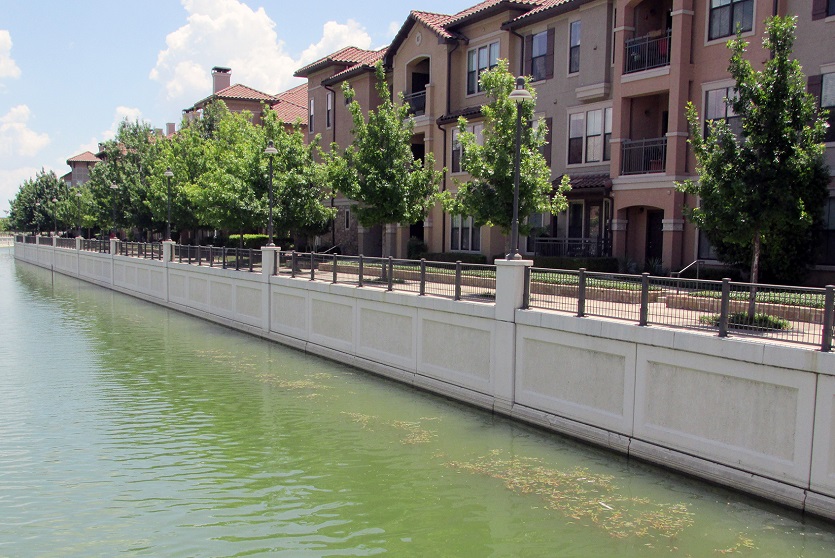Reinforced Earth® is the first choice for retaining walls.
Invented over 60 years ago, Reinforced Earth® MSE retaining wall solutions have long been the first choice for engineers designing earth retention, retaining walls, ground stabilization, and for solving most soil-structure interaction design challenges.
The original Reinforced Earth®, a signature innovation
More than sixty years ago, a new construction technology was invented by Henri Vidal consisting of granular soil and reinforcement working in harmony for great stability and strength.
It was an invention that revolutionized the heavy civil construction industry. High internal friction, generated between granular fill and strategically embedded reinforcing strips allows the transfer of stress from the soil into the strips providing the resistance that soil alone does not otherwise possess. Reinforced Earth® MSE retaining wall structures combine select and controlled granular backfill with steel or geosynthetic tensile reinforcements and a modular facing system of precast concrete panels. This ideal combination creates a long-lasting gravity retaining structure.
First pioneered by Reinforced Earth, the concept of mechanically stabilized earth walls (MSE) / Retained soil systems (RSS) walls is used in multitude of construction applications. Our engineers work with our clients to apply this globally-recognized solution to solve many geotechnical challenges they face in building roads, bridges, embankments, industrial landscapes, and more. Together, we solve problems that arise when seeking solutions for soil and structure interaction.
Concept description
A Reinforced Earth® structure is a single, coherent gravity mass that can be engineered for specific high resistance to both static and dynamic load requirements. Reinforced Earth® Mechanically Stabilized Earth (MSE) / Retained soil systems (RSS) walls combine controlled backfill with a selection of steel or geosynthetic soil reinforcements that are attached to a modular facing system. Facing systems consist of concrete panels varying in shape and design. The ideal combination of earth, soil reinforcements and facing creates a sustainable reinforced soil structure. This technology can be adapted to suit retaining walls of any height. It is also capable of supporting major dead and live loads imposed by the associated structures, vehicles or other equipment.
Reinforced Earth® applications
For nearly sixty years now, Reinforced Earth® MSE retaining wall or Retained soil systems (RSS) wall structures have been constructed worldwide, now totaling more than 66-million square meters of surface area installed worldwide.
We have partnered with developers and builders in the full spectrum of construction sectors:
- Roads and motorways
- Railways
- Airports
- Hydraulic infrastructure
- Industry, Energy and Mining
- Urban development
- Protective infrastructure
Design options and materials
Our professional engineers design Reinforced Earth® MSE retaining wall or Retained soil systems (RSS) wall structures considering the internal and external stability, the static loads and the predicted dynamic loads. We optimize the design for your project using a choice of materials and proper quantities that suit your planned use for the wall and the intended service life.
Our experience over many decades have allowed us to expand the range of design options thus permitting to adapt to any project and site constraints. Our Reinforced Earth® structures can in fact be designed with precast concrete facing panels with various dimensions and shapes, and using steel or geosynthetic reinforcements.
Our steel soil reinforcements have been designed and tested to optimize the pull-out and tensile capacity for various types of backfill. The reinforcing strips are patterned with “ribs” to enhance bonding with the compacted backfill. Ladders may be used for efficiency in low-height walls or lightweight backfill situations where tension is low and extra pull-out capacity is needed.
Corrosion protection for all components in the form of galvanization is included or occasionally stainless steel will be used when necessary to achieve a design life of 75 years, 100 years, or more. For temporary walls, using black steel is an option.
Our geosynthetic reinforcements are selected based on the characteristics of the intended backfill to be used, load factors, required service life and other considerations, engineers select from our four main categories of geosynthetic soil reinforcing strips:
> GeoStrap®
Coated polyester (PET) strips without high-adherence edges, best for low pH backfill
> HA GeoStrap™
Coated polyester (PET) strips with high-adherence edges, best for low pH backfill
> EcoStrap™
Coated polyvinyl alcohol (PVA) strips without high-adherence edges, best for high pH backfill
> HA EcoStrap™
Coated polyvinyl alcohol (PVA) strips with high-adherence edges, best for high pH backfill
Architectural finish
Our robust precast panels can be customized with architectural finish allowing designers and architects to add a touch of art to Reinforced Earth® structures.
Installation
The installation procedures for Reinforced Earth® walls are straightforward and consists of 3 main stages. The quick and easy assembly of Reinforced Earth® structures is notably due to no scaffolding or heavy plant being required. Each panel simply fits into the slot formed by the elements already in place.
1 – Assembly of the facing
Once the bottom row of panels is laid onto a smooth, well-levelled concrete foundation strip ensuring correct initial positioning, the upper rows of panels are assembled as the filling operation progresses. They are kept vertical by means of temporary wedges and clamps.
2 – Installing the reinforcements
The reinforcement layers are generally spaced a vertical distance of 75 cm. They are positioned on the compacted fill layer and bolted to the facing panels in the case of steel reinforcements or threaded into sealed sheaths in the facing in the case of synthetic reinforcements.
3 – Backfilling and compacting
The backfill is added in layers of a maximum of 25 cm thickness and compacted using appropriate equipment. Machinery should not pass directly over the reinforcements and heavy vehicles should not travel closer than 1.50 m from the panels as this may impair their plumpness.
Our experienced operations team develop organized manufacturing and delivery schedules for the materials necessary to build your Reinforced Earth® structure. Installation is ensured to be rapid and efficient due to standardized material patterns and repetitive handling processes that quicken placement of the wall components.
Advantages of Reinforced Earth® MSE retaining walls
- Strength, flexibility, and resilience
- Expected long service life and relatively low cost of construction
- Adaptability to a wide range of environments
- Inextensible soil reinforcements and bolted connections are secure, simple, and quick to install
- Durable precast facing panels allow for a wide variety of surface textures and custom artwork


